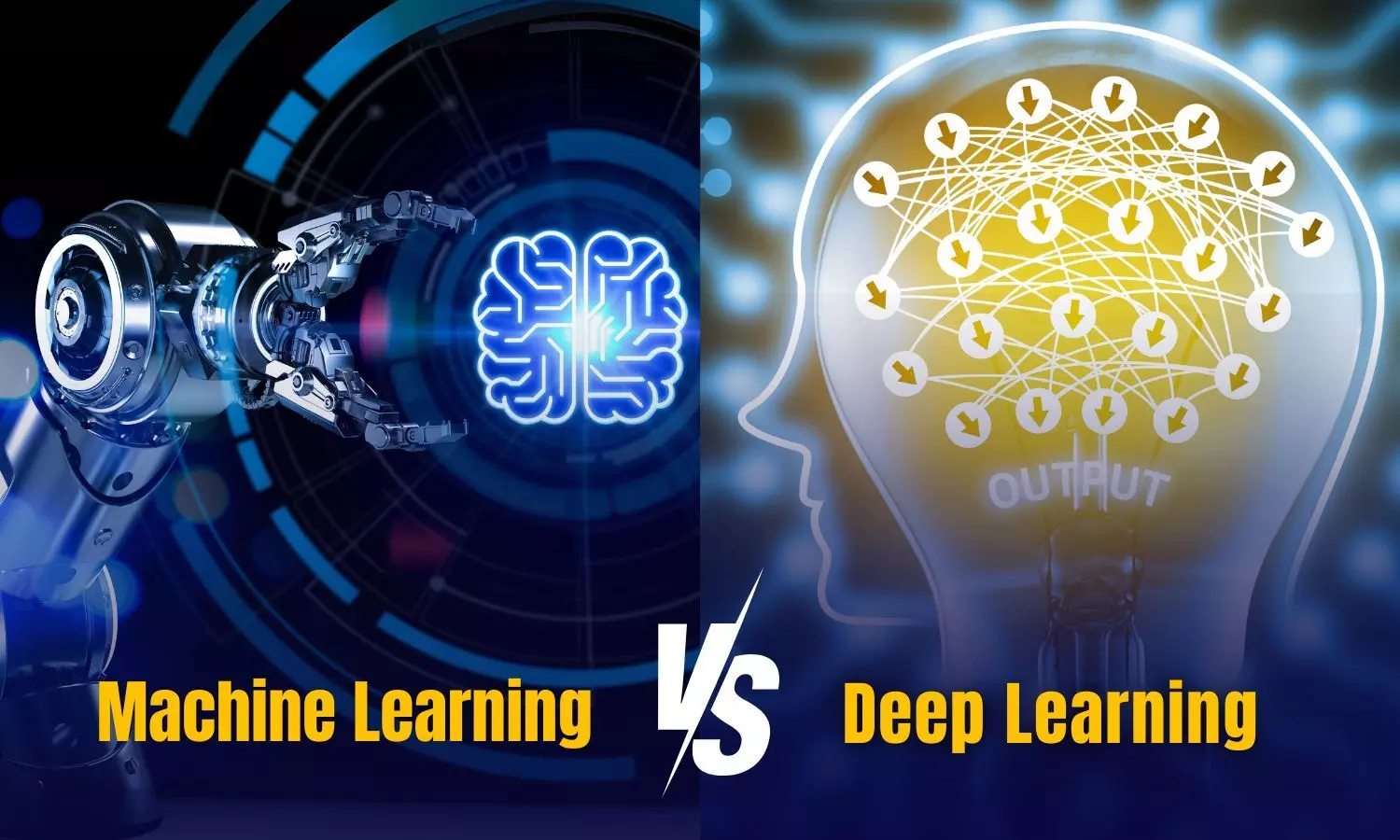Deep Learning vs Machine Learning: Understanding the Key Differences and Applications
Explore the fundamental differences between machine learning and deep learning, their distinct applications, and how both technologies are driving the future of artificial intelligence.
Deep Learning vs Machine Learning: Understanding the Key Differences and Applications

The terms artificial intelligence (AI), machine learning, and deep learning have become common in recent years, even if you are not a data science professional. Sometimes, they're used interchangeably. While linked, each of these concepts has a specific meaning.
Deep learning is a subset of machine learning, which itself is a subset of artificial intelligence. You might think of them as a series of overlapping concentric circles, with AI at the centre, followed by machine learning and deep learning. In other words, deep learning is an example of AI, but AI is not.
In this article, let’s discuss more about AI, machine learning, and deep learning, as well as how they are related and differ.
Deep Learning vs. Machine Learning
According to Oxford Languages, artificial intelligence is "the theory and development of computer systems capable of performing tasks that would normally require human intelligence." Britannica provides a comparable definition: "the ability of a digital computer or computer-controlled robot to perform tasks commonly associated with intelligent beings."
Machine learning and deep learning are both types of artificial intelligence. In a nutshell, machine learning is AI that can adapt automatically with minimal human intervention. Deep learning is a type of machine learning that uses artificial neural networks to simulate the learning process of the human brain.
Here are the key basic differences:
What is Artificial Intelligence?
At its most fundamental, artificial intelligence is the application of computer science and data to enable machines to solve problems.
While we don't yet have human-like robots attempting to take over the world, we do see indications of AI all around us. These could be as simple as a chess-playing computer program or as complicated as an algorithm that predicts a virus's RNA structure to aid in the development of vaccinations.
Machine learning is required for a machine or program to improve on its own without the need for additional human programmer input.
What is Machine Learning?
Machine learning is the study of computer systems that learn and adapt automatically based on experience rather than being explicitly programmed.
A programmer can use rudimentary AI to inform a machine how to respond to different sets of instructions by manually coding each "decision." Machine learning models allow computer scientists to "train" a machine by feeding it vast volumes of data. The machine analyses and draws conclusions from the data using a set of rules known as an algorithm. The more data the machine processes, the better it becomes at executing a task or reaching a conclusion.
Examples:
Music streaming service. Spotify learns your music choices in order to provide you with new suggestions. When you signal that you appreciate a song by listening to the end or adding it to your library, the service improves its algorithms to provide more accurate recommendations. Netflix and Amazon utilise comparable machine learning algorithms to provide personalised recommendations.
What is Deep Learning?
Whereas machine learning algorithms typically require human correction when they make a mistake, deep learning algorithms can improve their outcomes through repetition without human interaction. A machine learning algorithm can learn from relatively limited pieces of data. However, a deep learning algorithm requires large datasets that may include heterogeneous and unstructured data.
Consider deep learning to be the next step beyond machine learning. Deep learning is a machine learning technique that layers algorithms and processing units, or neurones, to form an artificial neural network. These deep neural networks draw inspiration from the structure of the human brain. Data flows through this web of interconnected algorithms in a nonlinear fashion, similar to how human brains process information.
Examples:
Today, deep learning is employed in a variety of fields. Deep learning is used in automated driving to detect objects like stop signs and pedestrians. The military employs deep learning to recognise objects via satellites, such as determining safe or risky zones for its personnel. Of course, Deep learning is also widely used in the consumer electronics business. Home assistance systems, such as Amazon Alexa, rely on deep learning algorithms to respond to your voice and understand your preferences.
The key distinctions between Machine Learning and Deep Learning
1.First and foremost, while typical machine learning algorithms, such as linear regression or decision trees, have a relatively straightforward structure, deep learning is built on an artificial neural network. This multi-layered artificial neural network is complicated and interwoven, much like the human brain.
2.Second, deep learning algorithms require significantly less human intervention. Remember Tesla's example? If the stop sign image recognition technique were a more typical machine learning approach, a software developer would manually select features and a classifier to classify photographs, verify that the output is correct, and change the algorithm if necessary. As a deep learning algorithm, the features are extracted automatically, and the program learns from its own mistakes.
3.Third, deep learning takes significantly more data than typical machine learning algorithms to perform successfully. Machine learning works with a thousand data points; however, deep learning often only has millions. Because of its complicated multi-layer structure, a deep learning system requires a huge dataset to reduce irregularities and produce high-quality results.
In conclusion, while machine learning and deep learning have similar AI aims, they differ in complexity, data requirements, and applicability. Machine learning is versatile across many areas and requires less computational capacity, but deep learning excels at processing huge datasets and tackling more complex tasks such as image recognition and natural language processing. Finally, the decision between the two is based on the unique problem at hand and the resources available. As technology improves, both will continue to play critical roles in determining the future of AI and innovation.

